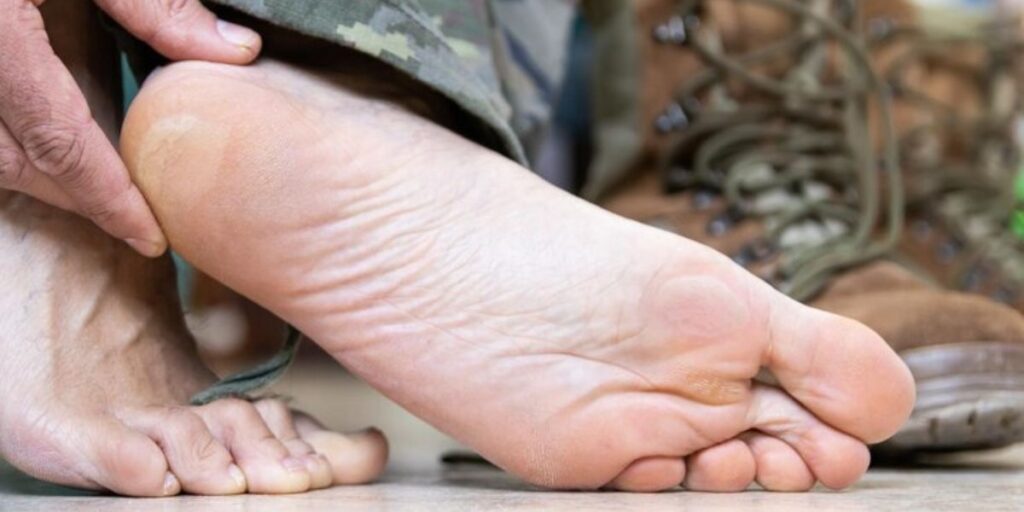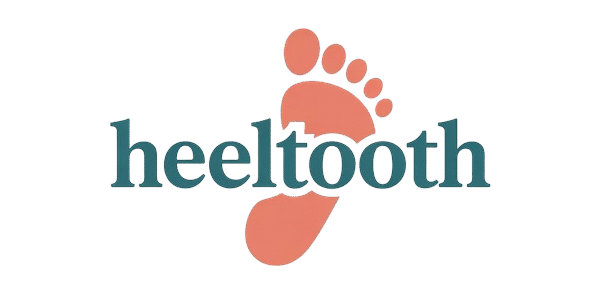Understanding Callus vs Corn vs Bunion
Understanding the differences between callus, corn, and bunion is key to better foot health. These common foot problems often confuse many people because they look similar but affect your feet in very different ways. A foot care specialist can help you identify whether you have thickened skin like a callus or corn, or a painful foot deformity like a bunion. Calluses and corns develop from repeated pressure or friction, causing rough skin patches or hard spots, while bunions are bony bumps that change your toe’s shape. Knowing these differences helps you find the right treatment, from callus removal to bunion pain relief, so you can keep walking comfortably and pain-free.
What Are Corns, Calluses, and Bunions?
Corns are small, round areas of thickened skin, usually forming on toes or feet where bones press against the skin. They tend to be painful, especially when pressed. In contrast, calluses are larger, rough patches of thickened skin that usually appear on the soles or heels due to constant pressure. Calluses are less painful but can still cause discomfort.
Bunions are bony bumps that form on the side of the big toe joint. They develop when your toe leans toward the other toes, causing a deformity. Unlike corns and calluses, bunions affect the bone structure, causing swelling and redness. Foot deformities like bunions require different treatment than simple skin thickening.
Key Differences Between Corns, Calluses, and Bunions
The main difference lies in where they form and what causes them. Corns and calluses result from skin irritation and pressure, whereas bunions are structural changes in your foot bones. Corns are usually smaller and painful; calluses cover larger areas and tend to be painless. Bunions cause visible bumps and joint pain.
| Condition | Location | Cause | Pain Level | Treatment Focus |
| Corns | Toes or foot tops | Friction on small area | Sharp, localized | Corn removal treatment |
| Calluses | Soles or heels | Constant pressure | Mild or none | Callus removal |
| Bunions | Big toe joint side | Bone misalignment | Joint pain | Bunion surgery or braces |
How to Tell If You Have a Corn, Callus, or Bunion
You can recognize corns by their hard center and surrounding inflamed skin. They feel like small, painful bumps, especially when walking. Calluses appear as rough, thick skin patches on your soles. They usually don’t hurt but can become tender if ignored. Bunions show as a hard bump on the side of the big toe, often red and swollen, causing toe misalignment.
If you experience foot pain, don’t wait. Foot pain caused by corns and calluses can worsen without care. Checking for corn vs callus symptoms like size, location, and pain can help. When unsure, a podiatrist near me can provide an accurate diagnosis and recommend the right podiatry treatment options.
Can Corns Form on Bunions?
Yes, corns can form on bunions because the bunion causes extra pressure on the skin. The bump from the bunion rubs against shoes, leading to painful corns. This combination can make walking uncomfortable and complicate treatment. Managing both conditions together is important to relieve discomfort.
A foot care specialist often treats these overlapping issues by reducing pressure with bunion braces and splints or suggesting better footwear. Early intervention prevents foot friction injuries and reduces the risk of worsening skin thickening or foot pain.
Do Bunions Cause Calluses or Corns?
Bunions can cause both calluses and corns due to uneven pressure distribution on your foot. The big toe pushing inward alters how your foot touches the ground, increasing friction on certain areas. This often leads to thickened skin, either as calluses or corns, around the bunion or other toes.
Understanding this link helps you manage symptoms better. Treatments focus on correcting the bunion deformity and relieving skin issues. Options range from custom orthotics for bunions to reduce pressure, to surgical methods when needed.
Causes and Risk Factors for Corns, Calluses, and Bunions
Ill-fitting shoes, high heels, and tight socks are common causes of corns and calluses. Repeated pressure or friction causes your skin to thicken as a natural defense. For bunions, genetics, foot shape, and arthritis increase risk. Age and certain activities like dancing or running also contribute.
People with diabetes or poor circulation must be careful. Proper diabetic foot care can prevent severe complications. Being aware of foot pressure points and choosing comfortable footwear can minimize risk factors for all these conditions.
Treatment and Management Options
Treating corns and calluses often starts with removing thickened skin through callus removal or corn removal treatment. Soaking feet, using pads, and changing footwear help. For bunions, mild cases benefit from bunion pain relief using braces or orthotics. Severe bunions may require bunion surgery.
Professional help at a foot health clinic ensures the right approach. A foot pain specialist can offer personalized treatment plans combining lifestyle changes, medication, or surgery when necessary. Regular monitoring prevents recurrence and complications.

Managing Corns, Calluses, and Bunions in Arizona
In Arizona, access to skilled foot care specialists and podiatrists near me is growing. Many clinics offer comprehensive care for these conditions. Local podiatrists understand regional lifestyle factors affecting foot health, like heat and footwear choices.
Arizona residents can benefit from specialized care including custom orthotics, advanced skin treatments, and minimally invasive bunion corrections. Timely treatment improves mobility and quality of life for people suffering from these foot issues.
Prevention Tips for Corns, Calluses, and Bunions
Preventing these problems starts with proper shoe fit—wide toe boxes and cushioned soles reduce pressure. Regular foot care like moisturizing and inspecting your feet helps too. Avoiding high heels and tight shoes lessens the chance of developing bunions or skin thickening.
Exercise and foot stretching keep joints flexible. Using callus prevention tips and rotating shoes can minimize skin problems. For bunions, early use of splints or braces can slow progression. Healthy habits combined with professional advice provide the best defense.
FAQs About Corns, Calluses, and Bunions
Common questions include: What’s the difference between a corn and a callus? They differ mainly in size and pain. Many ask, Can corns form on bunions? Yes, due to pressure. People wonder, When to see a podiatrist for foot pain? If pain or deformity affects walking, see a specialist.
Others want to know treatment options for bunions or if bunions cause calluses. Surgery is sometimes necessary but not always. Many seek foot care tips for people with bunions to avoid worsening. Clear answers help patients make informed choices.
Conclusion – Taking Steps Toward Healthier Feet
Understanding the differences between corns, calluses, and bunions empowers you to act early. Proper care and timely treatment from a foot care specialist can ease pain and improve foot function. Whether managing skin thickening or correcting foot deformities, the right approach makes all the difference.
If you notice any unusual bumps or discomfort, don’t hesitate to consult a podiatrist near me. Healthy feet mean a happier, more active life. Start today by choosing comfort and expert care for your step forward.
FAQs
How do I know if I have a corn, callus, or bunion?
You can tell by the location and texture: corns are small and hard, calluses are larger thickened skin, and bunions appear as bony bumps near the big toe.
Are bunions the same as calluses?
No, bunions are a foot deformity involving joint changes, while calluses are thickened skin caused by repeated friction.
How to get rid of a corn or bunion?
Use corn removal treatment or visit a podiatrist near me for expert care; bunions may require bunion pain relief or surgery.
What is the difference between a corn, callus, and blister?
Corns and calluses are hardened skin from pressure, while blisters are fluid-filled bubbles caused by friction or burns.
Welcome to Heel Tooth! I’m Lee Marvin.

